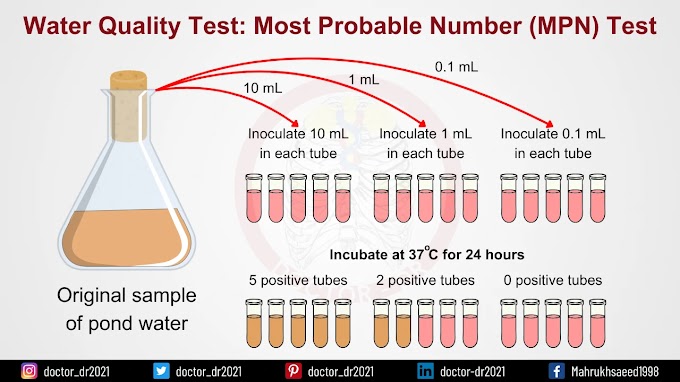Table of Contents
- Introduction for Python in Bioinformatics
- What is Python Programming?
- Advantages of Python for bioinformatics
- Tools for Python in Bioinformatics
- Applications of Python in Bioinformatics
- References
Introduction
- Bioinformatics is a rapidly advancing field that merges biological sciences with computational techniques.
- Computational tools are essential for analyzing and interpreting biological data.
- Various programming languages are used in bioinformatics, with Python and R being the most popular choices.
What is Python Programming?
- Python is a widely used, high-level programming language known for its simplicity and versatility.
- It is commonly applied in bioinformatics for:
- Developing software tools and applications.
- Data manipulation and visualization.
- Genome analysis.
- Literature searches and many other applications.
Advantages of Python for Bioinformatics
- Compatible with multiple operating systems, including Windows, Mac, and Linux.
- Built-in features make it highly suited for bioinformatics tasks.
- Dynamic and modular, allowing researchers to reuse and share code efficiently.
- Simple syntax makes it easy to learn and apply.
- High-level language offering advanced data structures for handling complex biological data.
Tools for Python in Bioinformatics
Numerous Python tools and packages are available for use in bioinformatics applications. Among these resources are the following tools and libraries:
1. Biopython
- One of the most widely used Python libraries for bioinformatics.
- Open-source collection of modules designed for biological computations.
- Working with DNA, RNA, and protein sequences.
- Sequence alignment, motif search, and nucleotide-to-protein translation.
- Parsing and manipulating PDB files for protein structure analysis.
- Supporting formats like FASTA, GenBank, and BLAST.
- Visualization of biological data, including sequence alignments and phylogenetic trees.
Some of the tasks of Biopython are:
- Biopython provides tools for working with DNA, RNA, and protein sequences, including sequence alignment, motif and pattern matching, and translation between nucleotide and protein sequences.
- Biopython includes tools for working with protein structures, such as parsing and manipulating PDB files and performing structure comparisons.
- Biopython supports file formats commonly used in bioinformatics, such as FASTA, GenBank, and BLAST.
- Biopython includes tools for visualizing biological data, such as sequence alignment plots and phylogenetic trees.
- Python packages are not available in python by default. We have to install and import them. We can also import specific functions of a package.
Example:
# install package
pip install biopython
# import package and specific function
import Bio
from Bio.Seq import Seq
# reverse complement a nucleotide sequence
my_seq = Seq("AGTACACTGGT")
print(my_seq)
AGTACACTGGT
my_seq.reverse_complement()
Seq('ACCAGTGTACT')
2. PyMOL
- PyMOL is a free and open-source molecular visualization program for bioinformatics.
- It generates high-quality pictures and animations of molecular structures that may be used for a number of purposes, including drug discovery, protein engineering, and molecular biology research.
- PyMOL is developed in Python and can be seamlessly integrated with other Python-based tools and libraries.
- PyMOL may be enhanced via Python-based plugins that provide additional features and functionality to the software.
- There are several Python-based plugins for PyMOL, including those for sequence analysis, ligand docking, protein-protein interaction analysis, and others.
3. Biskit
- Modular, object-oriented Python library for structural bioinformatics.
Used for:
- Protein-ligand docking.
- Molecular dynamics simulations.
- Protein structure prediction.
4. Scikit-learn
Scikit-learn is a Python package for machine learning. It is a robust and adaptable tool for machine learning applications in bioinformatics, offering a diverse set of algorithms and tools for analyzing complicated biological information and making predictions about biological systems.
Applications include:
- It may be used to categorize biological samples based on gene expression or proteomics information.
- It is useful for clustering biological samples and reducing the dimensionality of huge datasets.
- It may be used to create machine learning models that predict the structure of proteins and protein-protein interactions using amino acid sequences.
5. NumPy (Numerical Python)
NumPy is a Python library that is used for working with numerical data in Python. It is extensively used in Pandas, SciPy, Matplotlib, Scikit-learn, and many other scientific Python packages. NumPy provides a multidimensional array object called ‘ndarray’ and can be used to perform a wide range of mathematical operations on arrays.
To install and import Biopython:
pip install numpy
import numpy as np
6. Matplotlib
- Matplotlib is a Python library for data visualization, allowing the creation of high-quality graphs such as line plots, scatter plots, histograms, and heat maps.
- It is widely used in bioinformatics to visualize various biological data, including DNA and protein sequences and molecular structures.
- To install and import Matplotlib, use the following commands:
pip install matplotlib
import matplotlib.pyplot as plt
- It helps visualize gene expression data, making it easier to identify patterns and relationships.
- It allows visualization of DNA and protein sequences, aiding in the detection of sequence variations and functional features.
- It is used to plot phylogenetic trees, helping to understand evolutionary relationships between different species or groups of organisms.
Applications of Python in Bioinformatics
- Python is extensively used in bioinformatics for various applications, including genome analysis, protein structure visualization, machine learning, and data visualization.
- It plays a key role in genome analysis by aligning DNA and protein sequences, identifying genetic variations, and performing gene expression analysis, with Biopython being a widely used library for these tasks.
- In protein structure analysis and visualization, Python is used alongside tools like PyMOL to explore molecular structures.
- Machine learning applications in bioinformatics utilize Python to classify genes, predict protein structures, and analyze biological data, with Scikit-learn being a commonly used library for building predictive models.
- Python provides powerful data visualization capabilities through libraries like Matplotlib and Seaborn, which are widely used to create plots and visualize complex biological datasets.
References
- DeLano, W. L. (2002). The PyMOL Molecular Graphics System. DeLano Scientific, San Carlos, CA, USA. Retrieved from http://www.pymol.org.
- Ekmekci, B., McAnany, C. E., & Mura, C. (2016). An Introduction to Programming for Bioscientists: A Python-Based Primer. PLoS Computational Biology, 12(6). https://doi.org/10.1371/journal.pcbi.1004867.
- Grunberg, R., Nilges, M., & Leckner, J. (2007). Biskit: A Software Platform for Structural Bioinformatics. Bioinformatics, 23(6), 769–770. https://doi.org/10.1093/bioinformatics/btl655.
- Biopython Tutorial and Documentation. Available at http://biopython.org/DIST/docs/tutorial/Tutorial.pdf.
- NumPy: Absolute Beginner’s Guide. Accessible at https://numpy.org/doc/stable/user/absolute_beginners.html.
- Python Programming Guide. Available on Tutorialspoint: https://www.tutorialspoint.com/python/index.htm.
- Scikit-learn Tutorial. Accessible at https://www.tutorialspoint.com/scikit_learn/index.htm.
- Rosignoli, S., & Paiardini, A. (2022). Boosting the Full Potential of PyMOL with Structural Biology Plugins. Biomolecules, 12(12). https://doi.org/10.3390/biom12121764.








